As urbanization expands, the need for sustainable infrastructure that mitigates environmental impact becomes increasingly critical. One innovative solution gaining traction is the concept of living pavements. These porous surfaces, integrated with greenery, enhance the aesthetic appeal of urban areas and offer numerous environmental benefits. This blog will explore how living pavements can transform urban landscapes, focusing on examples from Victoria and British Columbia.
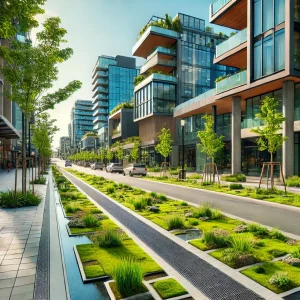
Understanding Living Pavements
Living pavements allow water to permeate through the surface, reducing runoff and promoting natural groundwater recharge. Unlike traditional impervious surfaces, such as asphalt and concrete, living pavements incorporate materials like permeable pavers, porous concrete, and asphalt, as well as greenery that can absorb water and filter pollutants. This combination creates a more harmonious relationship between the built environment and the natural ecosystem.
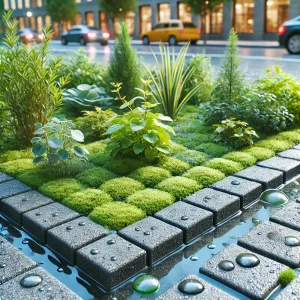
Environmental Benefits
The integration of porous surfaces and greenery into urban landscapes offers several environmental advantages:
- Stormwater Management: Living pavements allow water to seep through, reducing the volume and speed of stormwater runoff, which helps prevent flooding and erosion. This is particularly beneficial in cities like Victoria, where heavy rainfall can lead to significant stormwater challenges.
- Pollution Reduction: As water passes through permeable surfaces, it is naturally filtered, removing pollutants such as oil, heavy metals, and debris before they can enter the water system. The greenery incorporated into living pavements also plays a role in filtering air pollutants and improving air quality.
- Urban Heat Island Mitigation: Traditional paving materials absorb and retain heat, contributing to the urban heat island effect. With their permeable surfaces and vegetation, living pavements reflect less heat and provide cooling through evapotranspiration.
- Enhanced Biodiversity: Incorporating greenery in living pavements creates microhabitats for various plant and insect species, supporting urban biodiversity. This is particularly important in urban areas where natural habitats are limited.
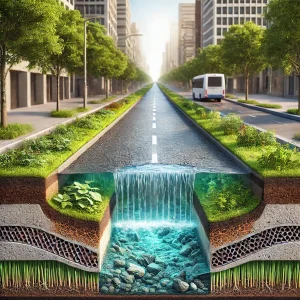
Types of Permeable Surfaces
Several types of permeable surfaces can be used in living pavements, each offering unique benefits:
- Permeable Pavers: These are concrete or stone units with gaps filled with permeable materials like gravel or soil. They are durable and suitable for high-traffic areas such as parking lots and walkways.
- Porous Asphalt and Concrete: These materials have interconnected voids that allow water to pass through. They are ideal for roadways and larger surfaces where traditional pavers might need to be more practical.
- Grass Pavers: These plastic grids filled with soil and grass provide a permeable surface that blends seamlessly with the surrounding landscape. They are commonly used in parking areas and driveways.
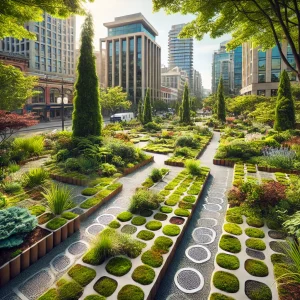
Real-World Applications in Victoria, British Columbia
Victoria is at the forefront of implementing sustainable urban infrastructure, with several projects showcasing the potential of living pavements:
- Rainwater Management Projects: The city has integrated permeable surfaces in various public spaces to manage stormwater. For example, redesigning certain streets and public areas includes permeable pavers and bioswales that absorb and filter rainwater, reducing the burden on the city’s stormwater systems.
- Green Roofs and Walkways: In addition to permeable pavements, Victoria has embraced green roofs and walkways that combine vegetation with permeable surfaces. These installations manage stormwater and contribute to the city’s green infrastructure goals.
- Residential Applications: Homeowners in Victoria are increasingly opting for permeable driveways and walkways that incorporate greenery. These enhance the functionality and aesthetics of their properties while contributing to the city’s sustainability efforts.

Challenges and Maintenance Considerations
While living pavements offer numerous benefits, there are challenges to consider:
- Installation Costs: The initial cost of installing permeable surfaces and greenery can be higher than traditional paving methods. However, long-term stormwater management and maintenance savings often offset this investment.
- Maintenance Requirements: Permeable surfaces require regular maintenance to prevent debris from clogging them, which can reduce their effectiveness. Similarly, greenery must be managed appropriately to ensure it thrives and continues to provide environmental benefits.
- Seasonal Considerations: Permissive surfaces must be designed to withstand freeze-thaw cycles in regions like Victoria, where winters can bring freezing temperatures. This may require the use of specific materials and installation techniques.
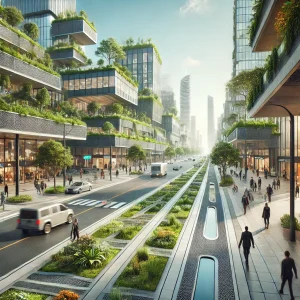
Future Potential
Integrating living pavements into urban landscapes is a promising approach to creating more sustainable cities. As technology advances and the costs of sustainable materials decrease, living pavements will become a standard feature in urban planning. Cities like Victoria lead the way, demonstrating how permeable surfaces and greenery can create resilient, environmentally friendly urban spaces.
By embracing living pavements, we can move toward a future in which our cities are built for efficiency, sustainability, and harmony with the natural environment.